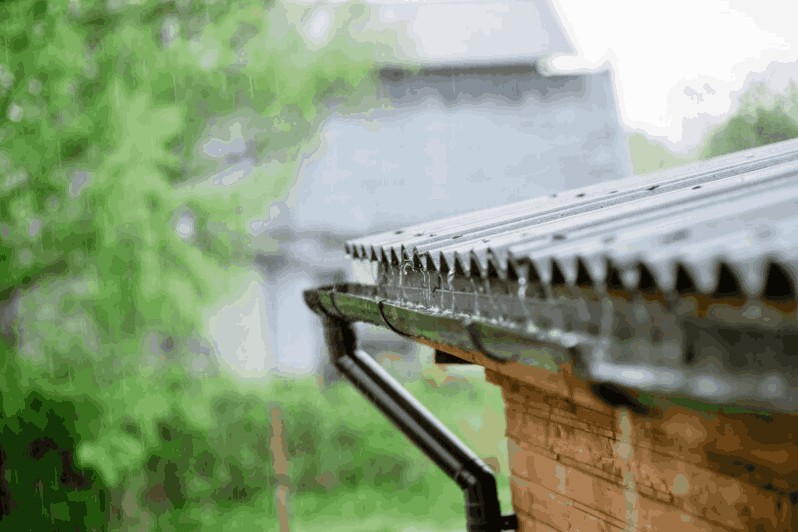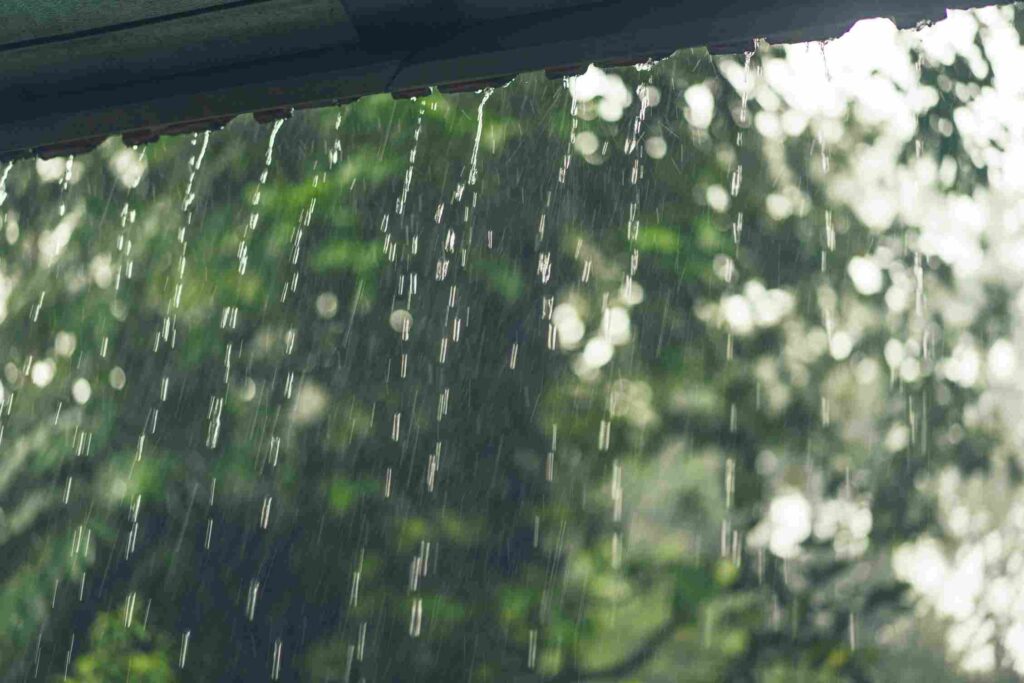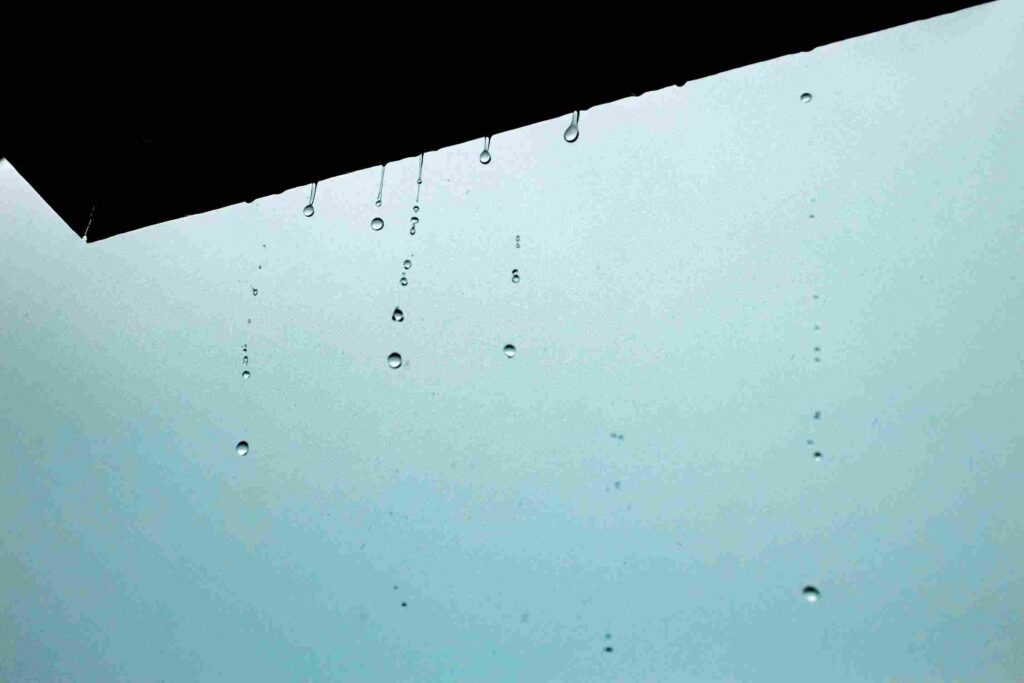If you’re thinking about getting a new roof, you might be wondering if roofers can work in the rain. After all, it might be challenging to plan a roofing project around the weather because rain is a frequent occurrence. Can roofers install a roof in the rain? That is the subject we’ll address in this blog.
Safety Concerns in Roofing during Rain
When working on a roof, safety should always come first, but working in the rain might increase the risk. Workers may easily slip and fall on wet roofs due to their slipping hazards. Rain can also make it difficult to see where you’re going, which raises the possibility of accidents.
Roofers must take extra measures when working in the rain because of this. While climbing ladders or scaffolding, they should be particularly cautious, wear slip-resistant shoes, and utilize a safety harness. Also, they should be mindful of the possibility of lightning during a thunderstorm and seek cover if required.
The Impact of Rain on Roofing
The process of roofing can be significantly impacted by rain. For instance, if the roof decking is damp, the shingles may buckle or distort as a result. Leaks from wet underlayment can also harm the interior of your home.
Rain can also make it difficult to operate on a roof. When the ground is slick, it might be more dangerous to walk and work. It may even be impossible to work at all if it is raining really hard.
Do roofers work in the rain?
Although roofers are able to work in the rain, it is typically not advised. Dry and mild weather are the best conditions for roofing. But occasionally it’s necessary to complete roofing work during the wet months.
Roofers can typically continue working on roofing rain, but they will need to take extra steps to protect their safety. But, it’s preferable to put off work until the weather clears up if there is a thunderstorm or heavy rain.
The procedure will be different than in dry weather while roofers are working in the rain. Tarps will be required to protect the roof from the elements. Also, they’ll need to use unique equipment and supplies, including sealants, which perform better when it’s wet.

Can a Roof be Replaced in the Rain?
Although it can be difficult, replacing a roof in the rain is not impossible. The main worry is making sure the new roof is set up correctly and doesn’t leak.
Work with a skilled roofer who is accustomed to working in muddy conditions if you intend to replace your roof during the rainy season. To ensure that the roof is correctly sealed and won’t leak, they will take special care.
It’s also critical to realize that roofing tasks may require more time while it’s raining. If the rain is too hard, roofers may have to cease working, which will cause the job to be delayed.
Shingling in the Rain
Roof shingling is more difficult in the rain than it is in good weather. Insufficient adhesion of the shingles may lead them to rise or blow off in strong winds. Also, the rain may make it more difficult to work with the materials, which may cause a delay.
Roofers will need to take extra care to ensure that the shingles adhere properly if shingling needs to be done in the rain. To prevent the materials from being overly moist, they will also need to move swiftly.
Rain on Roof Before Shingles
Problems can arise during installation for reasons other than mere rain. Rain that falls on a roof before the shingles are put on might harm the underlayment and roof decking. Later problems, including leakage, may result from this.
It’s critical to dry the roof as soon as possible if rain does fall on it before the shingles are fitted. In order to dry the surface and make sure that the materials can be installed correctly, roofers will need to employ fans and other equipment.
Precautions for Working in the Rain
There are various measures roofers can take to secure the safety of their employees and the completion of the project if roofing work must be done during the rainy season.
Keeping a close eye on weather prediction is a crucial first step. Heavy downpours and thunderstorms should be avoided by roofers since they might be hazardous.
When working on damp surfaces, roofers should take extra steps to safeguard their safety. This can entail employing a safety harness, donning slip-resistant footwear, and being extra cautious when utilizing ladders or scaffolding.
Roofers should also employ various tools and materials that function better in damp conditions. For instance, they might have to cover the area with tarps or attach the shingles with sealants rather than nails.

Conclusion
Although roofers are able to work in the rain, it is typically not advised. It is a difficult process because of the possibility of harm to the roofing materials and safety issues. To ensure the project’s success, it’s crucial to engage with a skilled roofer who is familiar with working in wet conditions and takes extra safety measures if roofing work must be done during the rainy season.
It’s preferable to plan the job for dry, warm weather if you’re thinking about replacing your roof. The job will be executed securely, effectively, and with the greatest results possible thanks to this.
In conclusion, working on roofing in the rain is doable but not recommended. To ensure their personal safety and the project’s success, roofers must take extra care. For the greatest results, homeowners should engage with JR Roofing and Gutters.
